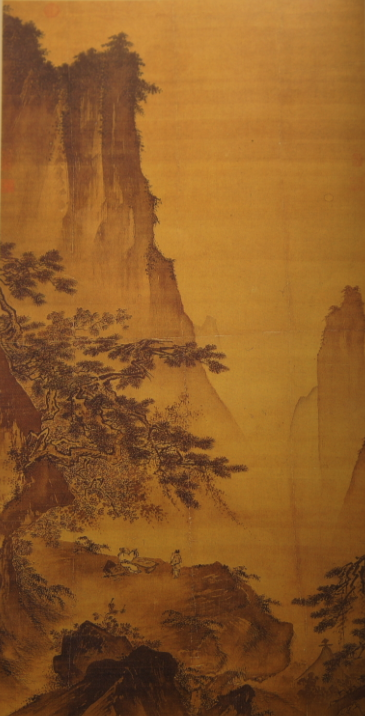
“The Chinese were the first people who did not think the making of pictures as a rather menial task, but who placed the painter on the same level as the inspired poet. The religions of the East taught that nothing was more important than the right kind of meditation… Religious art in China came to be employed… as an aid to the practice of meditation. Devout artists began to paint water and mountains in a spirit of reverence, not in order to teach any particular lesson, nor merely as decorations, but to provide material for deep thought. Their pictures on silk scrolls were kept in precious containers and only unrolled in quiet moments, to be looked at and pondered over as one might open a book of poetry and read and reread a beautiful verse…
“Chinese artists did not go out into the open, to sit down in front of some motif and sketch it. [T]hey travel[ed] and contemplate[d] the beauty of nature so as to capture the moods of the landscape. When they came home they would then try to recapture these moods by putting together their images of pine-trees, rocks and clouds much in the way a poet might string together a number of images which had come into his mind during a walk… The Chinese, therefore, consider it childish to look for details in pictures and then to compare them with the real world. They want, rather, to find in them the visible traces of the artist’s enthusiasm.”
Ernst H. Gombrich, “Chapter 7: Looking Eastwards,” The Story of Art, 15th edition

“Their pictures on silk scrolls were kept in precious containers and only unrolled in quiet moments, to be looked at and pondered over as one might open a book of poetry and read and reread a beautiful verse…”
Loved that!
If I had read this while studying Chinese art, it may have changed my opinion on it. While studying Chinese art, I was extremely annoyed with the fact that all the paintings seemed the same and it was practically impossible to distinguish one artist from the other.
If I had known then that these paintings were used for meditation, I probably would have held more admiration for them.
I’m glad that I am now a bit more clear on the purpose of these hazy paintings of dreamy landscape. Thanks, Gombrich!
The paintings seem much the same because Chinese art became even more rigidly formulaic than that of the ancient Egyptians. Gombrich concludes that “art became more and more like a graceful and elaborate game which has lost much of its interest as so many of its moves are known.”